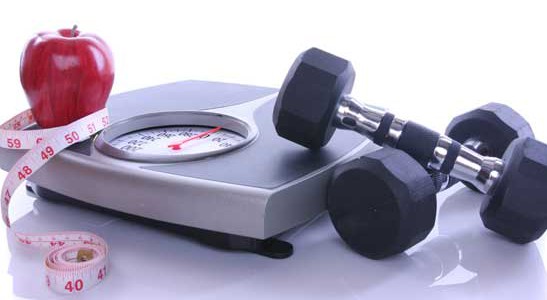
As we sit back and celebrate Christmas (or just a day off work!) today, many of us are no doubt feeling a stretch on our waistlines after indulging a little (or a lot) in our favorite holiday treats. While it may feel a bit premature to start thinking about those New Year’s resolutions, a new study offers some sage advice to help you get on track: compared with aerobic activities, daily weight training is more effective in keeping abdominal fat at bay.
Usually, the first thing many people do when they enter the gym at the beginning of January is to step on a treadmill, but the new study, published this week in the journal Obesity, suggests we may be better off spending that time hitting the weights.
“This study underscores the importance of weight training in reducing abdominal obesity, especially among the elderly,” says Dr. Frank Hu, senior author from Harvard School of Public Health (HSPH). “To maintain a healthy weight and waistline, it is critical to incorporate weight training with aerobic exercise.”
Though body weight is a result of our genes, metabolism, environment and culture, obesity results from an energy imbalance – simply put: when we eat too many calories and do not get enough exercise, we gain weight.
Any type of exercise — whether aerobic or resistance training, moderate or high intensity — delivers health benefits and helps to burn off excess calories. However, past research suggests that certain types of exercise, such as weight-lifting and high-intensity interval training, can boost the metabolism and actually lead to increased calorie-burning long after a workout has ended. What’s more, weight training has also been found to help regulate blood sugar and reduce the risk of developing type 2 diabetes.
Since most previous studies have focused on a specific population of participants – for example, those who were overweight or had type 2 diabetes – for short amounts of time, yielding mixed results, the team behind this latest study used a large sample of healthy men, with a wide range of body mass indexes (BMIs), over a long period of time.
Weight training combined with aerobic exercise still the best option
The researchers studied 10,500 healthy men in the US over the age of 40 who were part of the Health Professionals Follow-up Study between 1996-2008. After assessing the physical activity, waist circumference and body weight of the men, the team analyzed changes in their activity levels during the 12-year period and how this affected their waistlines.
Results showed that the men who increased the amount of time they spent lifting weights by 20 minutes a day had a smaller waistline gain during the time period (-0.67 cm), compared with those who increased their aerobic exercise by 20 minutes a day (-0.33 cm) or who increased yard work or stair climbing (-0.16 cm). Not surprisingly, those who increased sedentary behaviors including watching TV gained more weight in their belly area.
The researchers note that, although aerobic exercise by itself was linked to less total weight gain compared with weight training, waist circumference is a better sign of health in older people.
“Because aging is associated with sarcopenia, the loss of skeletal muscle mass, relying on body weight alone is insufficient for the study of healthy aging. Measuring waist circumferences is a better indicator of healthy body composition among older adults,” says lead study author Dr. Rania Mekary, from the Department of Nutrition at Harvard School of Public Health (HSPH).
Indeed, while excess body weight in general is linked to poorer health, fat stored around the abdominal region — known as visceral fat — has been shown to be particularly dangerous. Waist circumference is one of the most practical tools to assess visceral fat and can be used as an indicator of risk for type 2 diabetes, high cholesterol, high blood pressure, heart disease, and even some cancers. According to the Centers for Disease Control and Prevention, women with a waist circumference of more than 35 inches and men with a waist circumference of more than 40 inches are at increased risk for developing chronic diseases.
The researchers also note that, while weight training was most strongly linked to smaller waist circumference, combining it with aerobic activity resulted in the greatest health benefits. “Engaging in resistance training or, ideally, combining it with aerobic exercise could help older adults lessen abdominal fat while increasing or preserving muscle mass,” adds Dr. Mekary.
